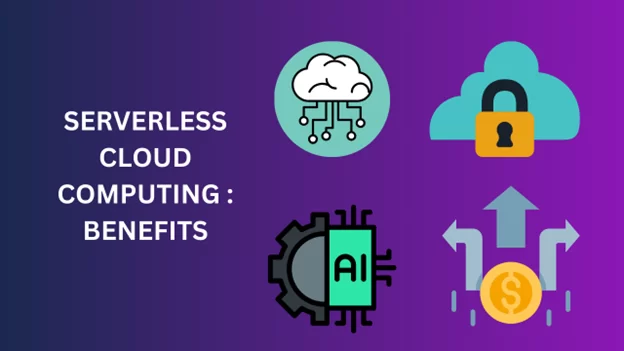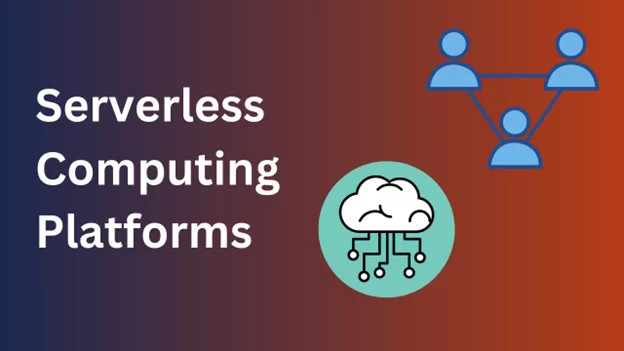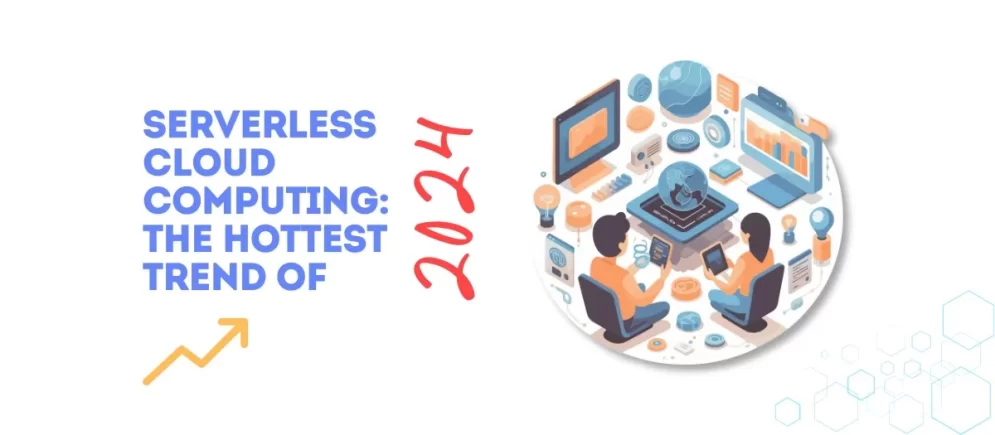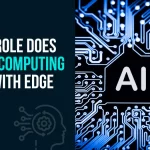Share post on
Table of Contents
Trends and Transformations in Serverless Computing for 2024
AI-First Strategies
Artificial intelligence (AI) is rapidly becoming a crucial part of cloud strategies. As serverless cloud computing platforms simplify the deployment and management of AI applications, companies are adopting AI-first approaches to enhance decision-making and improve customer experiences. By utilizing serverless cloud computing architectures, businesses can build highly scalable AI applications without the complexities of managing infrastructure, allowing them to innovate at unprecedented speeds.
Serverless Analytics
Autonomous Infrastructure
Microservices Architecture
Microservices architecture has become a popular design pattern in cloud computing, enabling developers to break down applications into smaller, manageable services. Serverless cloud computing enhances this approach by allowing businesses to deploy microservices without the overhead of managing servers. This flexibility allows companies to innovate rapidly, making updates and scaling services independently—critical for modern applications.
Serverless Machine Learning
Machine learning (ML) is revolutionizing industries, and serverless cloud computing significantly simplifies ML model deployments. Serverless cloud computing platforms like AWS Lambda enable developers to deploy and manage ML models without the worry of infrastructure, reducing complexity and accelerating deployment times. This democratization of ML allows companies of all sizes to harness AI technologies more freely.
Secure Development
As more organizations adopt cloud-native development practices, ensuring security is becoming a top priority. Serverless cloud computing, with its inherent scalability and reduced attack surface, provides a secure environment for cloud-native applications. In 2024, we will see an increasing focus on building security into the development lifecycle, from code development to deployment, allowing businesses to innovate without compromising data security.
Blockchain Integration
Multi-Cloud Unification
As businesses continue to adopt multi-cloud and edge computing strategies, the need for unified platforms becomes increasingly important. Serverless cloud computing provides a seamless solution for managing workloads across multiple cloud environments and edge locations. By abstracting infrastructure management, serverless computing allows businesses to run applications closer to users, improving performance and reducing latency. This unification will be a key trend in 2024.
Low-Latency Computing
Reducing latency is crucial for delivering high-performance applications in cloud computing. Serverless cloud computing is helping push the boundaries of low-latency computing by enabling developers to run functions closer to end-users, particularly in edge computing scenarios. In 2024, businesses will continue to adopt serverless technologies to enhance application responsiveness, ensuring seamless user experiences, especially for real-time applications like gaming and video streaming.
Green Computing
Sustainability is no longer optional for businesses, and cloud providers are making significant strides to meet the demand for greener solutions. Serverless computing, with its dynamic scalability and efficient resource usage, inherently supports greener cloud operations. By optimizing resource allocation and minimizing idle server time, serverless platforms help reduce energy consumption. In 2024, businesses that prioritize sustainability will increasingly turn to serverless to meet their environmental goals while maintaining scalability.
Serverless DevOps
In 2024, the integration of serverless cloud computing within DevOps practices will transform how teams collaborate and deliver software. By leveraging serverless architectures, development and operations teams can streamline workflows, automate deployments, and enhance monitoring capabilities. This synergy allows for faster iteration cycles, reduced operational overhead, and improved resource management.
E-Governance Role
Edge AI Integration
Serverless cloud computing and edge AI are paving the way for more efficient and intelligent applications. As more devices integrate AI capabilities, serverless platforms allow AI models to be deployed closer to the data source, reducing latency and enabling real-time decision-making. This trend is especially crucial for industries like healthcare, autonomous vehicles, and smart cities where rapid, low-latency responses are vital.
Roleedge AI: Cloud Intelligence
Roleedge AI revolutionizes cloud computing by integrating advanced intelligence into serverless architectures. This integration allows for the deployment of dynamic AI models that enhance operational efficiency and improve user experiences. With Roleedge AI, businesses can automate decision-making processes and achieve predictive analytics in real time. Its capability to operate across edge and cloud environments further reduces latency, delivering faster responses for mission-critical applications.
Lumolog: Cloud Data Management
Lumolog enhances cloud data management by optimizing data strategies through serverless cloud computing architectures. This approach enables real-time data processing and analysis, improving decision-making and driving data-driven insights for businesses. By leveraging Lumolog’s advanced data handling capabilities, organizations can streamline operations and improve scalability. It supports seamless integration with multi-cloud environments, ensuring flexibility and adaptability for growing data needs.
Why Serverless is the Hottest Trend in 2024?
As the serverless cloud computing hottest trend of 2024, it allows developers to focus on coding, speeding up deployments and reducing costs

Cost-Effective
You only pay for what you use, reducing costs significantly compared to traditional servers.
Reduced Infrastructure Management
Developers can focus on writing code rather than managing servers.
Scalability
Serverless apps scale automatically, making them ideal for unpredictable workloads.
Rapid Development
Serverless computing speeds up development cycles since developers don’t need to worry about backend infrastructure.
Security Improvements
Serverless architectures often come with built-in security features, managed by the cloud provider.
12 Leading Serverless Computing Platforms in 2024

| Platform | Key Features | Target Audience | Visit |
|---|---|---|---|
| AWS Lambda | Auto scaling, event-driven, deep AWS integration | Developers using AWS services | AWS Lambda |
| Microsoft Azure Functions | Event-driven, seamless Azure integration | Developers using Microsoft Azure | Azure Functions |
| Google Cloud Functions | Lightweight, integrates with Firebase and Google services | Developers building with Google Cloud, Firebase | Google Cloud Functions |
| IBM Cloud Functions | OpenWhisk-based, serverless | Enterprise users in finance, healthcare | IBM Cloud Functions |
| Oracle Functions | FN Project based, strong for Oracle Cloud users | Oracle Cloud users, microservices | Oracle Functions |
| Alibaba Cloud Function Compute | Scalable, commonly used in e-commerce, focus on Asia | E-commerce platforms primarily in Asia | Alibaba Function Compute |
| Cloudflare Workers | Edge computing, ultra-low latency, global reach | Developers requiring low latency, global apps | Cloudflare Workers |
| Netlify Functions | Focused on front-end web development, Jamstack ecosystem | Web developers, Jamstack ecosystem | Netlify Functions |
| Vercel Functions | Integrates with Next.js, tailored for modern web apps | Modern web developers, Next.js users | Vercel Functions |
| Red Hat OpenShift Serverless | Kubernetes and OpenShift based, event-driven | Kubernetes developers, Chinese market | Red Hat OpenShift |
| Tencent Cloud SCF | Event-driven, integrated with Tencent Cloud | Chinese market developers, Tencent Cloud users | Tencent Cloud SCF |
| DigitalOcean Functions | Simple, cost-effective, ideal for startups | Startups, small to medium businesses | DigitalOcean Functions |
Conclusion
Our company specializes in custom web applications, providing solutions using the latest technologies. We also develop innovative mobile apps for both iOS and Android platforms, effectively engaging users. In addition, we offer expert business consulting services to enhance operations through modern technology.
In the e-commerce sector, we build platforms that improve customer experience and boost online sales. Our staff augmentation services provide skilled developers to support your projects. We also focus on digital marketing strategies that enhance your online presence and help you reach target audiences across various platforms.
Additionally, our cloud computing services offer scalable, secure, and efficient solutions for businesses looking to streamline operations and innovate in a cloud environment.
Share post on



